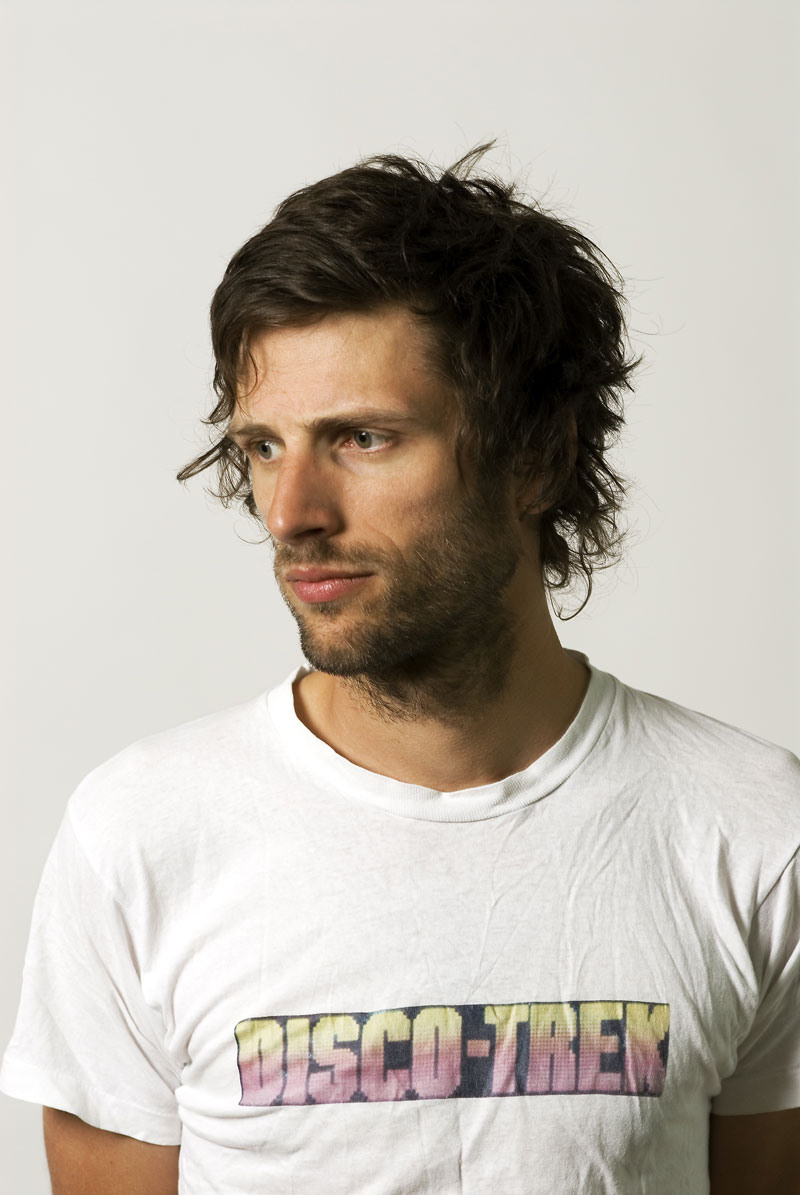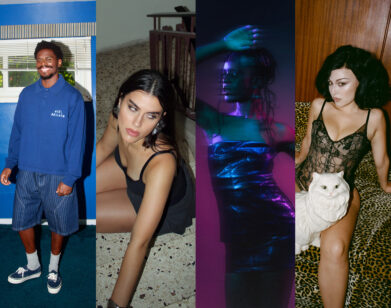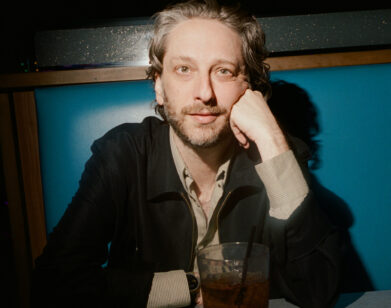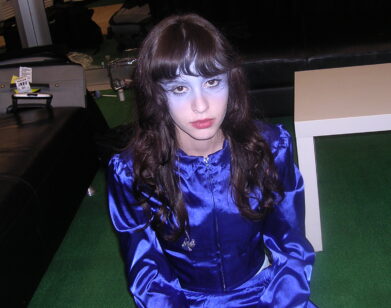Earth to Lindström

PHOTO COURTESY OF LIN STENSRUD
Hans-Peter Lindstrøm has a way of punctuating his sentences with a little laugh that keeps conversation floating above the room. So the effect of talking with the soft-spoken Norwegian for an extended period of time is not unlike the sweeping club epics he produces for his own Feedelity label. I’ve interviewed him twice now: The first time was in the summer of 2008, several weeks before the U.S. release of his debut album, Where You Go I Go Too. The record did a lot to establish Lindstrøm as separate from his frequent collaborator and fellow space disco-naut Prins Thomas. Then, last year, Lindstrøm consummated another partnership on Real Life Is No Cool, playing Moroder to Christabelle’s Donna Summer.
So a lot had changed for Lindstrøm by the time I called him a second time, last week. It was 9 pm in Oslo, and he had just finished putting his kids to bed. Though I was cutting into his music time, which had undoubtedly grown more precious as a U.S. tour loomed, the father of two still welcomed me with his familiar and endearing chortle.
ANDREW STOUT: Hello, Hans-Peter. How’s your day shaping up?
HANS-PETER LINDSTRØM: Pretty well. I’ve been working on some music between picking up my kids from school. It’s just like a regular day.
STOUT: What were you working on?
LINDSTRØM: There’s something I’m doing by myself and something I’m doing with Prins Thomas. Sometimes it’s a struggle to make everything work. [laughs] I usually work on music from nine in the morning until three in the afternoon. Then there are the family activities. Then I work again at night—from nine to as late as two.
STOUT: Last time we spoke we talked about your earliest musical experiences, and I think we spent a lot of time geeking out about Queen. So we fell well short of the point at which you started putting out dance records. What prompted you to make dance music?
LINDSTRØM: I realized a lot of my friends were going to nightclubs and listening to house music. [laughs] I was hanging out with them and going to clubs as well but I didn’t really understand that kind of music. I was listening to country music and was heavily into Hank Williams, bluegrass, and Bob Dylan. So I just decided I really needed to understand what this music I was hearing in the clubs was all about.
At the same time, I was almost done with my studies and I got a computer. Then somebody told me I could actually make music on the computer. [laughs] Also, a lot of the music that was really popular in the clubs at that time, ’98 and ’99, I realized was basically gospel music, which I had been singing for many years in choirs. So I realized then, this is music I already know, it’s just in a different setting. Then, as I was figuring all this out, I started working at a nightclub where I was exposed to a lot of DJs who also taught me a lot.
STOUT: What did you pick up from the DJs?
LINDSTRØM: The importance of selecting music and sequencing songs—making one song merge into another song. In retrospect, those are the most important lessons I got from DJs.
STOUT: Sequencing seems key to what you do. Your tracks build up and climax and crescendo in ways that work on headphones as well as in the clubs. Is this kind of sonic storytelling something you strive for?
LINDSTRØM: Yes, definitely. Since I’m working on new music now, all of these kinds of thoughts are running through my head every day. I have to decide the length of the tracks, the sequence, the transitions, the silence. The traditional way of making an album with songs that begin and end? I don’t know about that. It’s nice if you’re making a regular pop or rock album and you get ten little songs. But I really try to make the album with one big story instead of ten small stories. Maybe I’m just making it more difficult for myself by doing it this way. [laughs] But when I’m working on something and I get to the point where I feel it getting interesting, that’s my reward.
STOUT: Were there any albums or artists that taught you this more conceptual approach?
LINDSTRØM: The first time I heard a really interesting mix tape was when a Japanese guy gave me a DJ Harvey mix. You know the Sarcastic Disco thing? I was at the Winter Music Conference in Miami in 2001 and it was so boring and I couldn’t relate to anything that was happening at all. I was sitting by the pool at the Bungalow where we are staying and listening to music. I was just thinking I’d listen to this tape but I didn’t have any expectations. But it blew me away. Because it wasn’t like all the deep house everyone was playing then. It was a lot of weird stuff I hadn’t heard before—old disco and sort of esoteric stuff. I listened to that mix over and over again and, for me, it became an album.
STOUT: This is particularly interesting because the last two things we’ve talked about—the narrative element of your records and the variety of genres in DJ Harvey’s tapes—are both sort of overlooked parts of a lot of early disco records, before the music was called disco and had anything to do with John Travolta.
LINDSTRØM: You have a point, definitely. That’s something I’ve listened to a lot. The epic dance music, which is kind of like progressive disco, is definitely in the back of my head when I’m making music. But because I’ve already collected a lot of information from that time, it might be time to move on from it.
STOUT: As a listener, what genres or music periods are you still eager to explore?
LINDSTRØM: I guess it will be easier to say next time we talk. [laughs] But I’ve definitely been listening to a lot of the newer stuff from the States. So everything from Animal Collective and Grizzly Bear to Ariel Pink, who I just discovered last year. I found out about the albums he put out on Paw Tracks. Those were pretty mind blowing to me, because of the lo-fi sound and the craziness of those songs. I read about him and then I read about all the early home-tapers, like R. Stevie Moore. I’ve really gotten sucked into his world. It doesn’t mean I’m making music like that. But in ways I don’t understand right now, his music has been very inspirational to me.
LINDSTRØM PLAYS SANTOS PARTY HOUSE IN LOWER MANHATTAN ON THURSDAY. FOR MORE INFORMATION, VISIT HIS MYSPACE.






